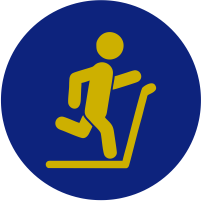Unstable Kneecap
What Is Unstable Kneecap?
As long as your kneecap (patella) stays in its groove in the knee, you can walk, run, sit, stand, and move easily. When the kneecap slips out of the groove, problems and pain often result.
What Causes Unstable Kneecap?
The kneecap connects the muscles in the front of the thigh to the shinbone (tibia). As you bend or straighten your leg, the kneecap is pulled up or down.
The thighbone (femur) has a V-shaped notch (femoral groove) at one end to accommodate the moving kneecap. In a normal knee, the kneecap fits nicely in the groove. But if the groove is uneven or too shallow, the kneecap could slide off, resulting in a partial or complete dislocation.
A sharp blow to the kneecap, as in a fall, could also pop the kneecap out of place.
What Are The Symptoms of Unstable Kneecap?
- Knee buckles and can no longer support your weight
- Kneecap slips off to the side
- Knee catches during movement
- Pain in the front of the knee that increases with activity
- Pain when sitting
- Stiffness
- Creaking or cracking sounds during movement
- Swelling
What Are The Treatment Options For Unstable Kneecap?
If the kneecap has been completely dislocated out of its groove, the first step is to return the kneecap to its proper place. This process is called reduction.
Sometimes, reduction happens spontaneously. Other times, your doctor will have to apply gentle force to push the kneecap back in place.
A dislocation often damages the underside of the kneecap and the end of the thighbone, which can lead to additional pain and damage to the cartilage on either the undersurface of the kneecap or covering the thighbone. Occasionally, a loose piece of cartilage is created. Arthroscopic surgery can correct this condition.
If the kneecap is only partially dislocated, your doctor may recommend nonsurgical treatments, such as exercises and braces.
Exercises will help strengthen the muscles in your thigh so that the kneecap stays aligned.
Cycling is often recommended as part of the physical therapy. A stabilizing brace may also be prescribed.
The goal is for you to return to your normal activities within 1 to 3 months.
A chronic condition, in which the knee continues to be unstable, can often be corrected by surgery. For example, surgery can be used to realign and tighten tendons to keep the kneecap on track, or to release tissues that pull the kneecap off track.
Our team is here for you
We offer the best, least invasive and least aggressive options to relieve your pain and symptoms so you can get back to the life you love. Atlantic Orthopaedic Specialists Joint Replacement Care Center has convenient locations in Virginia Beach, Norfolk and Chesapeake.



